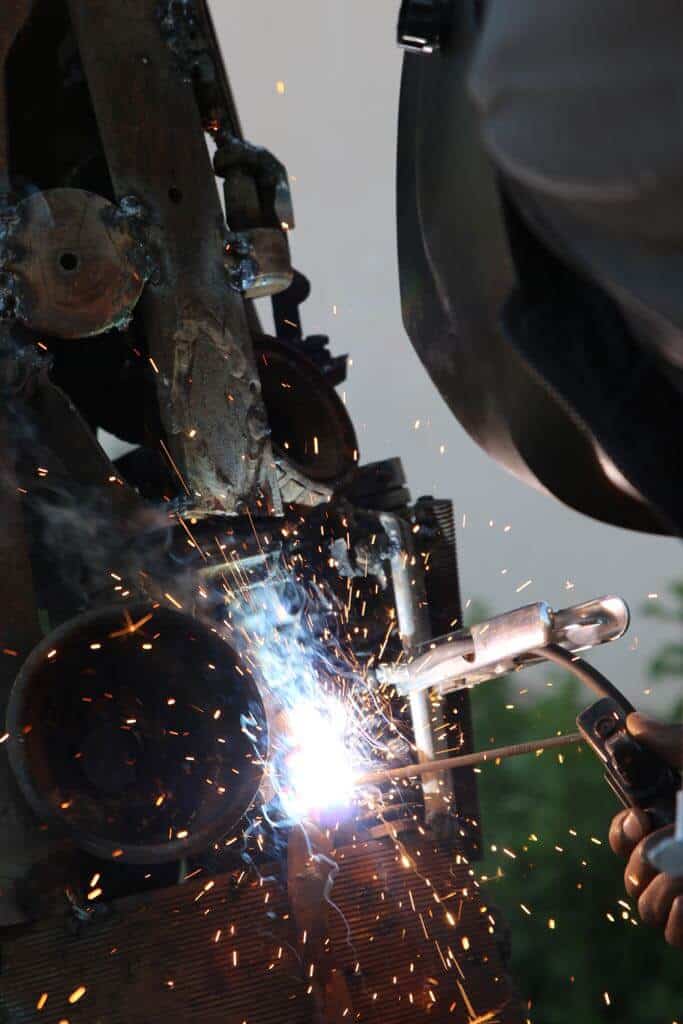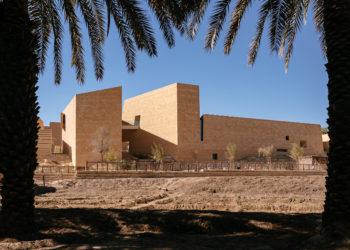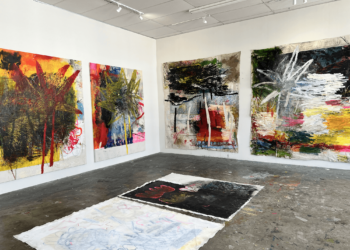Owen Milyoni Shikabeta
Greenpop has been creating a UNESCO funded Conservation Corner in Livingstone, Zambia. They have been creating environmental conscious and community driven art. Three artists were chosen to participate in the event; South African upcycling artist Heath Nash, Zambian painter Mwamba Chikwemba and Zambian sculptor Owen Milyoni Shikabeta. We have gotten in touch with Owen Milyoni Shikabeta to here more about his artmaking process and hoe art can promote environmental consciousness.
The Greenpop UNESCO Art project is placement art made up of a wall mural, upcycled art and a tree made from scrap metal. Photographer: Mischke Bosse
ART AFRICA: In 2013 you participated in the Insaka workshop which promoted recycling – especially around plastic waste. Would you say that this experience has both influenced your artmaking process, and your personal beliefs around recycling?
Owen Milyoni Shikabeta: It did influence me, because I realised how many different materials are out there -be it natural or man made. Even a used plastic can be the starting point for a piece. Basically, any given material has to be understood first before using it in art.
The Insaka workshop was the first time I dealt with solid waste as a challenge, not only as something that you drop or burn in a pit. This understanding made me more conscious about how and where I throw away my waste now. It would be great to have better solid waste management systems in place in Zambia to ensure that materials can be recycled. In the end our resources are limited and we cant waste precious materials like we do now. A plastic bag used for maybe 30 minutes can pollute the environment for thousands of years and its raw materials may never be used again. We are living in a time of milk and honey, while generations before us had to actually produce every milliliter by themselves. If we are not careful, it may not last.
You have worked both sculpturally and painterly on previous occasions – which process of art making do you think best portrays your understanding around the environment, and can you tell us more about these processes?
I think it has to be sculpture because of the physical nature it has. I can upcycle any material into a sculpture and make this into a statement about the environment.
When I get to a scrap yard, the magnitude of shapes I find inspire me. Each shape leads to a certain new step depending on the different pieces. Additionally, nature around me feeds into this process. But any material will have a different process. I want to start working with more plastic, for which I am still developing a methodology.
In your artist statement, you mention the circles of life and how you prefer to avoid waste and maintain a natural process. How does your tree sculpture for Greenpop’s festival reflect these ideals?
The shapes of the scrap that we found at the scrap yard in Livingstone were very interesting: turbines, bolts, old tools, pipes, cogwheels, and machines. These now make up a tree in accordance with the trees for bees theme of the festival. Those metal pieces already had a life and now got a new meaning. This is a step in the cycle of life and I guess it has a little more value now.
From here nature will do its part. For example, the moisture or rain will transform the piece by rusting it. Who knows whats going to happen next? Maybe someone will take it and make something new with it.
Owen Milyoni Shikabeta working on the 3m tree for the Conservation Corner in Livingstone. Photographer: Mischke Bosse
Why do you think public art is essential in the promotion of environmental issues, especially with regards to Greenpop’s mission?
The environment affects us all whether as an individual, who is aware of environmental issues or someone who is not. Art in a public space is a right vehicle to spark conversation and to ask questions to the public. It can ignite a variety of reactions.
Lastly, what are your hopes for the future – both in terms of your art career, and people’s perception of environmental issues; and how has your experience at Greenpop festival contributed to these topics?
My good friend Jin and I are preparing an exhibition at Modzi Arts in Lusaka curated by Julia Kaseka. Modzi Arts is a new space to promote art and artist in Lusaka. You should come and check our exhibition.
In the future I imagine to work more with recycled plastic. Heath was a great inspiration during the festival. Also I really enjoyed spending time with Cliff and learn so much about bees. I will find a spot where I can put up my own bee hive. Greenpop gave me opportunity to new ideas and inspirations.
In the future I hope to create more public art, provoke more thoughts with my work, be effective and influence a positive attitude. Together we can make a difference. Greenpop’s education campaign on environmental issues is a recommendable job and I would look forward to be part again.





